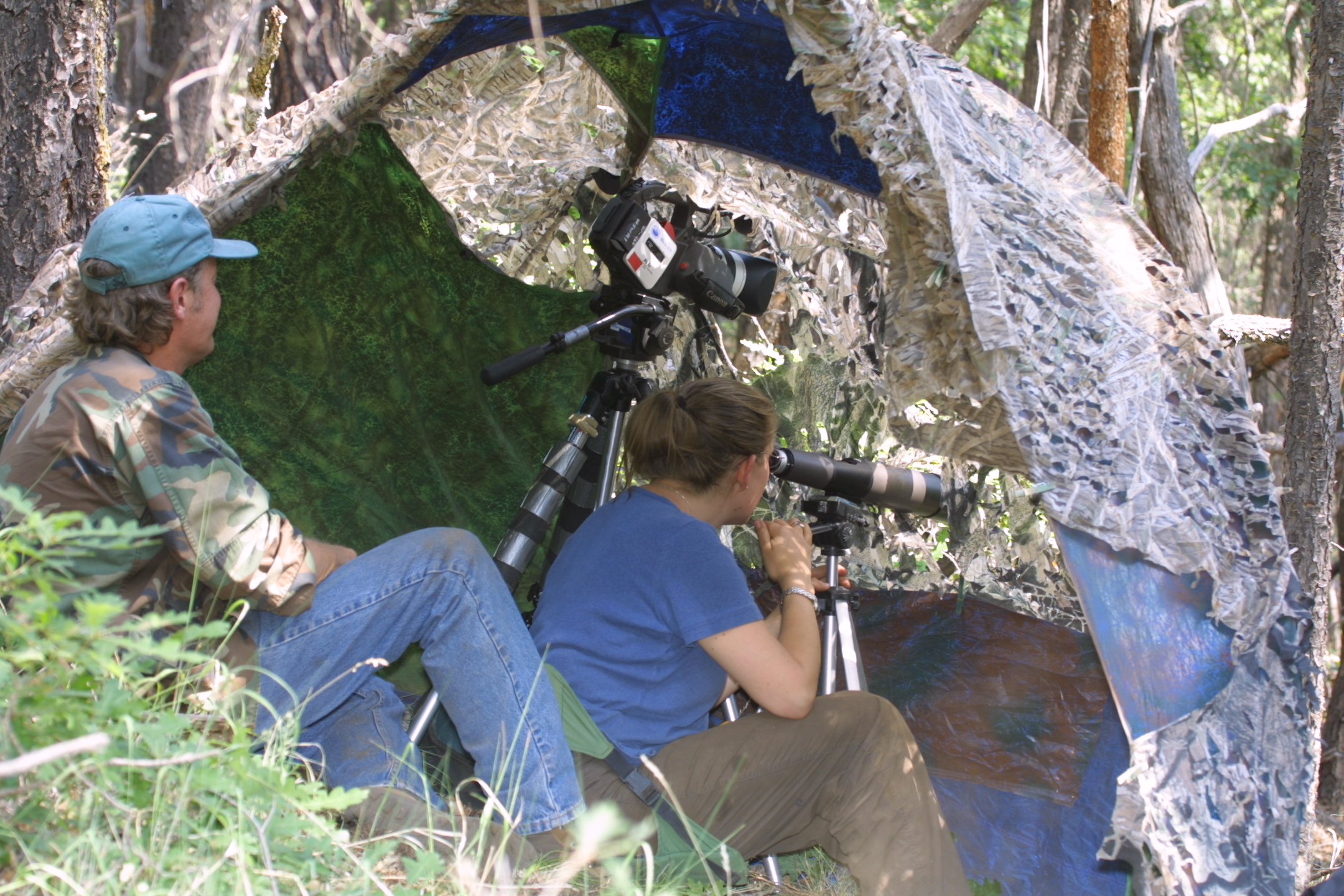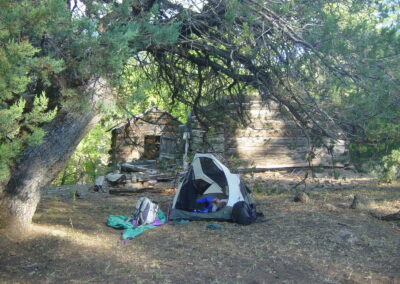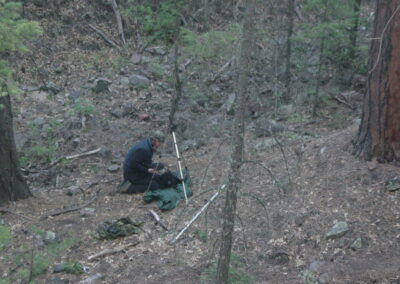
Mexican spotted owls surveys in Gila Bend National Forest
 Acoustical surveys of the endangered Mexican spotted owl as part of the US Fish & Wildlife Service’s “Recovery Plan for the Mexican Spotted Owl (Strix occidentalis lucida)” Since spotted owls are territorial and respond to calls, acoustic lure surveys can be used to locate owls for both research and management activities. These surveys are proven to be effective at locating spotted owls (Reid et al. 1999), but the influences of factors such as topography, vegetation, and distance on survey effectiveness are poorly understood. In a preliminary analysis, HSWRI demonstrated that Mexican spotted owls could be detected at distances up to 2 km (1.2 mi) under ideal conditions but that topography and ambient noise greatly affected detection distance. HSWRI researchers collected and analyzed several years of owl data to assist in the population assessment, including the impact of noise on breeding success. The study found that factors best predicting reproductive success were measures of suitable nesting habitat, not noise levels.
Acoustical surveys of the endangered Mexican spotted owl as part of the US Fish & Wildlife Service’s “Recovery Plan for the Mexican Spotted Owl (Strix occidentalis lucida)” Since spotted owls are territorial and respond to calls, acoustic lure surveys can be used to locate owls for both research and management activities. These surveys are proven to be effective at locating spotted owls (Reid et al. 1999), but the influences of factors such as topography, vegetation, and distance on survey effectiveness are poorly understood. In a preliminary analysis, HSWRI demonstrated that Mexican spotted owls could be detected at distances up to 2 km (1.2 mi) under ideal conditions but that topography and ambient noise greatly affected detection distance. HSWRI researchers collected and analyzed several years of owl data to assist in the population assessment, including the impact of noise on breeding success. The study found that factors best predicting reproductive success were measures of suitable nesting habitat, not noise levels.
Related Publications:
Bowles, A.E., K.J. Plotkin, B. Ikelhaimer, and T. Lavallee. 2002. Acoustic surveys for Mexican spotted owls (Strix occidentalis lucida): an analysis. Journal of the Acoustical Society of America 111(5):2392. (Abstract)
Denes, S.L, A.E. Bowles, K. Plotkin, C. Hobbs, J. Kern, and E. Pruitt. 2006. Effective area of acoustic lure surveys for Mexican spotted owls (Strix occidentalis lucida). Journal of the Acoustical Society of America 120(5):3267. (Abstract)




